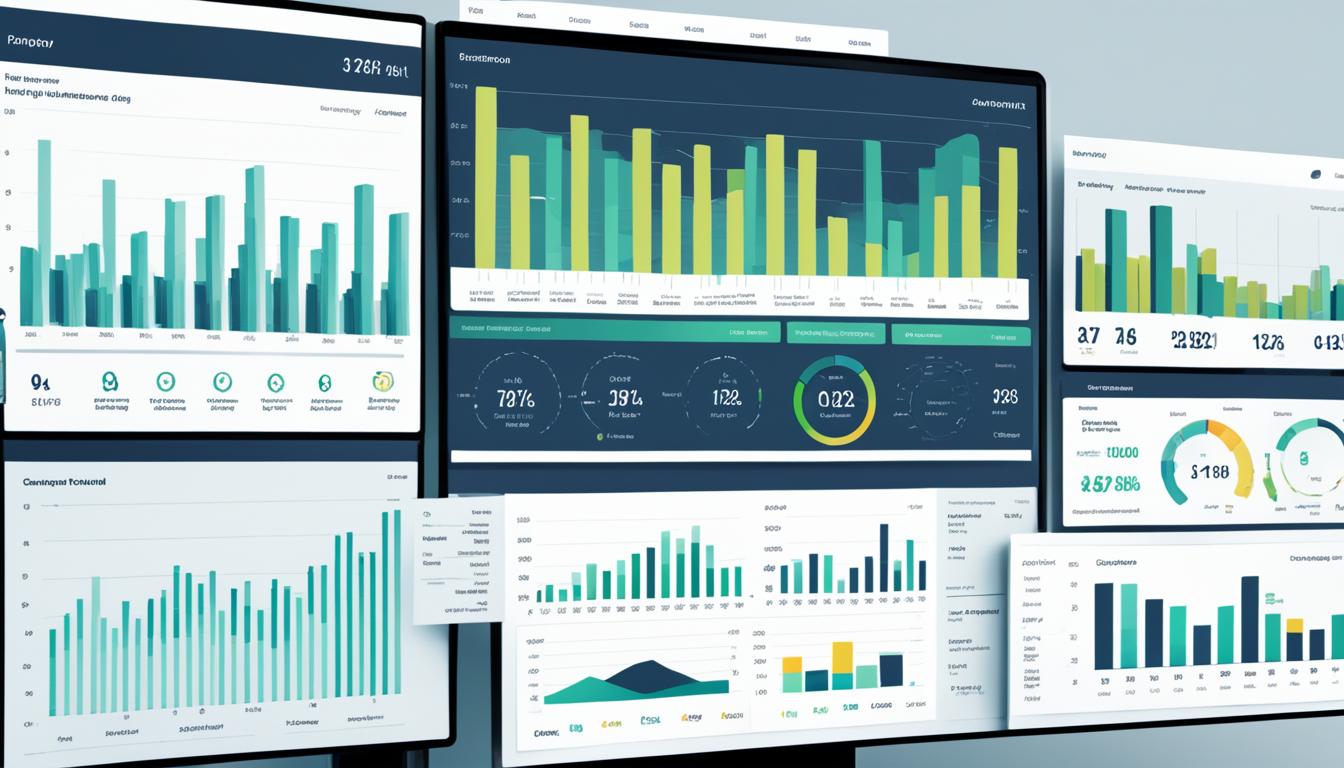Investment monitoring is essential for anyone looking to achieve their financial goals and ensure optimal performance of their investment portfolio. By understanding the main categories of investments—equity, fixed-income, and cash or cash equivalents—you can tailor your investment strategy to suit your risk tolerance and financial objectives.
Equity investments, including common stocks, preferred shares, exchange-traded funds (ETFs), mutual funds, and private equity, offer ownership stakes in companies such as Exxon, Apple, and Microsoft. These investments typically provide potential growth in asset value and dividends. Fixed-income investments, like corporate bonds, government bonds, and Treasury securities, involve lending money to entities and gaining interest payments in return.
Cash or cash equivalents, including checking accounts, savings accounts, certificates of deposit (CDs), and money market accounts, offer low-risk options that emphasize liquidity and capital stability, albeit with lower returns compared to other investments. By being aware of various investment types—stocks, bonds, mutual funds, ETFs, options, annuities, and commodities—you can make informed decisions for effective portfolio management.

Leveraging different investment monitoring techniques, such as using advanced stock research tools, portfolio trackers, and assessing key performance indicators (KPIs), can help ensure that your investment tracking remains efficient. Additionally, considering factors like diversification, risk assessment, and tax implications can further enhance your investment outcomes.
Set Clear Investment Goals
Setting clear investment goals is foundational to a successful investment strategy. Parents play a crucial role in influencing financial planning decisions early in life, shaping habits and beliefs that carry through adulthood. Investment objectives can typically be categorized based on age, income, and outlook, with common classifications including young and starting out, middle-aged and family-building, and old and self-directed. For instance, around 80% of a portfolio for 35-year-olds could be allocated to stocks like those from Exxon or Apple, while a 30% equity allocation may be suitable for someone in later retirement relying on their portfolio for living expenses.

High yield bonds, though potentially lucrative, should only form a limited part of a balanced portfolio due to their speculative nature. It’s essential to consider the risks associated with bonds, such as interest rate risk, credit risk, and call risk. Sector investments are typically more volatile compared to diversified investments across various sectors, reflecting the inherent risks and rewards of such strategies.
A critical aspect of effective financial planning is setting clear, specific, measurable, achievable, relevant, and time-based (SMART) goals. These help in structuring activities around short-term, intermediate-term, and long-term investment goals, ensuring alignment with different life stages. Particularly for those entering middle age, catching up on retirement savings and managing debts becomes crucial. Fully funding retirement accounts is advisable to secure financial stability and reduce dependence on government assistance.
Unexpected life events such as job loss, health issues, or caregiving responsibilities can pose challenges to achieving set investment objectives. Therefore, an adaptable and flexible investment plan is more beneficial compared to rigid ones. Continuous monitoring and accountability are key in steering investments towards success, emphasizing the importance of strategic asset allocation and periodic reassessment in response to life changes.
Regular Communication with Portfolio Companies
Effective investment monitoring requires ongoing and structured dialogues with portfolio companies. Continuous and proactive communication is essential for maintaining investor relations, enabling portfolio oversight, and facilitating strategic decisions.
Schedule Consistent Check-ins
Regularly scheduled check-ins are crucial for staying informed about the progress and developments within portfolio companies. These check-ins help in identifying any issues early and adapting strategies accordingly. They also provide an opportunity to strengthen proactive communication, ensuring alignment with long-term objectives and fostering good investor relations.

Utilize Online Project Management Tools
Leveraging online project management tools is vital for enhancing the efficiency of communication and collaboration. These tools facilitate real-time updates, track project milestones, and provide a transparent view of progress. Implementing such tools not only streamlines processes but also supports effective portfolio oversight by maintaining clear and proactive communication channels.
Track Key Performance Indicators (KPIs)
Tracking Key Performance Indicators (KPIs) is crucial for effectively monitoring and managing investments. Well-defined KPIs act as a compass, helping investors understand the performance metrics that matter most.
Define Relevant Metrics
Identifying the key performance indicators that align with specific business goals is fundamental. Strategic KPIs used by executives often include return on investment, profit margin, and total company revenue. Financial KPIs such as liquidity ratios, profitability ratios, solvency ratios, and turnover ratios offer deep insights into a company’s economic stability. Operational KPIs help track performance month over month, enabling investors to analyze processes in various segments or locations.
Monitor Revenue and Growth Targets
Maintaining a close watch on revenue and growth targets can unearth valuable data-driven insights. Investors should track metrics like revenue growth, customer acquisition cost (CAC), and customer lifetime value (CLV). Revenue growth can be calculated using the formula: (Revenue month B – revenue month A) / revenue month A x 100. Additionally, monitoring customer experience metrics such as resolution time, response time, and customer satisfaction ratings is pivotal for overall business analytics.

Process performance metrics like production efficiency, total cycle time, throughput, error rate, and quality rate are essential indicators of operational excellence. Likewise, marketing KPIs, including website traffic, social media interactions, and conversion rates, provide a comprehensive view of campaign effectiveness and market reach.
Utilize a Portfolio Tracker
Effective portfolio tracking is essential for managing diverse investments and making informed decisions. Financial technology platforms provide robust investment tools that aid in investment account aggregation and portfolio-level analytics.
Investment Account Aggregation
Platforms like Ziggma offer insights on portfolio quality, yield, and risk by linking accounts from over 20,000 institutions. This investment tool allows users to set limits for monitoring and automatically receive notifications when the limits are reached. Personal Capital is known for its ability to classify investments between retirement and taxable accounts, organizing them by asset classes such as cash, bonds, and stocks, offering a comprehensive view of one’s investments.
Portfolio-Level Analytics
Ziggma’s platform provides essential tools like the Portfolio Simulator for portfolio optimization. By tracking key performance indicators, users can ensure continual improvement in growth and profitability. Regularly checking portfolio analytics is recommended for continuous improvement. Morningstar’s Instant X-Ray feature and eMoney Advisor’s detailed cash flow reports further enhance portfolio-level analytics, offering insights into asset allocation, investment styles, and future cash projections.
Utilizing these advanced investment tools promotes better investment control and long-term financial health, ensuring an investor’s portfolio is optimized and well-diversified.
Conduct Regular Assessments of Management Teams
Regular assessments of management teams are critical in gauging a company’s trajectory. Through systematic management evaluation, investors can gain insights into the strategic leadership capabilities of the executives.

Evaluate Strategic Execution
One fundamental aspect of these assessments is evaluating the strategic execution of the management team. This involves measuring their performance against defined business development goals and understanding how effectively they navigate challenges. By focusing on strategic leadership, investors can identify areas where executives excel or need improvement.
Gather Feedback from Multiple Sources
Another crucial component is gathering feedback from multiple sources. This ensures a comprehensive view of the management’s competence and effectiveness. Input from board members, employees, and external stakeholders contributes to a well-rounded management evaluation, helping align the leadership’s actions with the company’s overall business development objectives.
Stay Flexible and Be Prepared to Make Adjustments
Investment landscapes are dynamic; staying flexible and being prepared to pivot is vital for long-term success. Strategic planning is essential, but equally important is the ability to adapt to changing market conditions and unforeseen events. Angel investors need to incorporate investment flexibility and adaptive investing into their strategies to effectively manage risks and capitalize on new opportunities as they arise.
Monitoring investments is crucial for managing risks and maximizing returns. Effective investment monitoring involves strategies such as setting clear goals and expectations, regular communication with portfolio companies, monitoring key performance indicators (KPIs), and conducting regular assessments of the management team. An adaptive approach helps investors stay resilient and make informed decisions quickly.
Utilizing advanced analytics tools can significantly enhance data-driven decision-making. For instance, leveraging these tools led to a 25% increase in data-driven financial decisions for Company X, showcasing the importance of flexibility and strategic planning. Additionally, adopting cloud-based financial management systems improved real-time financial visibility by 15%, further emphasizing the need for adaptable investing practices.
Developing organizational capabilities for adaptability, such as reading and acting on signals of change and rapid experimentation, helps investors navigate complex stakeholder systems. Embracing a growth mindset, encouraging innovation, and maintaining a balance between strategic planning and flexibility are key to thriving in a volatile investment environment.
Monitor Portfolio Diversification
Effective portfolio management hinges on a robust diversification strategy. By consistently monitoring portfolio diversification, investors can mitigate risk management concerns and ensure balanced asset allocation. This approach spreads risk across various asset classes, protecting the overall portfolio from market volatility.
For instance, Empower, which boasts over $1.4 trillion in assets under management, provides tools like the Investment Checkup feature, allowing users to track investments by account, asset class, or individual security. This facilitates smart weighting recommendations, crucial for maintaining an optimal diversification strategy. Similarly, SigFig connects with over 50 brokerages such as Schwab and Fidelity, offering personalized plans for just 0.25% per year, which includes automated investing options for efficient risk management.

Sharesight offers comprehensive tracking capabilities across up to 240,000 stocks, ETFs, and mutual funds globally. This platform also supports monitoring cryptocurrencies, real estate, private equity, and fixed-income investments. Such extensive coverage ensures proper diversification across various asset classes. Additionally, Yahoo Finance equips investors with real-time data and personalized alerts, further aiding in maintaining balanced asset allocation.
Ultimately, regular reviews of portfolio diversification are essential. Tools provided by Empower, SigFig, and Sharesight offer investors the means to achieve a stable and diversified portfolio. By utilizing these resources, investors can manage risk effectively and optimize returns through strategic asset allocation. The result is a well-diversified portfolio capable of weathering market fluctuations and achieving long-term financial goals.
Portfolio Risk Assessment
Conducting a comprehensive portfolio risk assessment is crucial for investors aiming to maintain a balanced investment exposure while securing downside protection. This process involves a meticulous risk evaluation of various asset classes, including stocks, bonds, money market funds, and cash. Understanding these risks and their impact on your portfolio is essential for aligning with your risk tolerance and investment horizon.
Portfolio risk management encompasses several key risk types. Market risk signifies the likelihood that investment values will fluctuate in response to stock market movements. Interest-rate risk addresses the potential decline in investment value as interest rates rise. Conversely, inflation risk emerges when investment growth is outpaced by inflation, leading to a real-term reduction in value.
The recovery of jobs post-recession, such as the swift rebound after the recent downturn resulting in 11.5 million jobs recovered, starkly contrasts with real estate return improvement anomalies. From a historical perspective, the NCR EIF Property Index fell by approximately 32 percent between March 2008 and March 2010. Monitoring these anomalies assists in appropriate risk evaluation strategies for portfolio management.
Liquidity also plays a pivotal role in effective portfolio management, ensuring assets can be quickly bought or sold without significant impact on their value. This flexibility facilitates timely rebalancing when risk levels shift, supporting robust downside protection mechanisms. A systematic approach to analyzing risks across investments helps optimize returns while maintaining ample liquidity reserves.

Understanding risk metrics is integral to a thorough portfolio risk assessment. For instance, risk evaluation calculating alpha, beta, and Sharpe ratios. Alpha measures performance relative to a benchmark index, with a positive alpha indicating outperformance. Beta assesses portfolio volatility, with values over one suggesting greater volatility. The Sharpe ratio evaluates the risk-to-reward tradeoff, with higher ratios pointing to better returns given the volatility. These metrics equip investors with valuable insights to manage their investment exposure efficiently.
During periods of significant market events, such as from September 2008 to February 2010, where 7.1 million jobs were lost, a comprehensive risk evaluation can help investors safeguard their investments. Equally, understanding value-at-risk (VaR) provides a worst-case scenario estimate, enabling informed decision-making to secure downside protection. Incorporating these risk management practices ensures that investment decisions are well-aligned with potential market dynamics and individual risk tolerance, reinforcing the long-term stability of the investment portfolio.
Understand Tax Implications
Navigating the tax implications of your investments is crucial for maximizing returns and achieving efficient tax planning. Investors should have a clear understanding of how various forms of investment income are taxed, including interest, dividends, and capital gains.
Consider Tax Loss Harvesting
Tax loss harvesting can be a valuable strategy in your tax planning arsenal. By strategically selling securities at a loss, you can offset gains accrued from other investments. It’s essential to bear in mind the wash sale rules, which prevent the immediate repurchase of any security sold at a loss. Capital losses not only neutralize capital gains but can also be carried forward to future tax years, providing long-term tax benefits.
Track Dividend Income and Withholding Tax
Effective tax planning involves tracking the nature of your dividend income. Ordinary dividends are taxed at regular income tax rates, while qualified dividends benefit from the lower capital gains tax rates. It’s necessary to understand the holding period requirements for these qualified dividends to ensure you maximize your tax benefits. With the tax rate on qualified dividends ranging from 0% to 23.8%, depending on your total taxable income, precise calculation and tracking can result in significant savings on your investment income tax.
Utilize Advanced Stock Research Tools
Leveraging advanced stock research tools is essential for any investor aiming to boost their investment analysis, conduct thorough equity research, and make informed stock selection decisions. These tools offer comprehensive insights into financial performance metrics, enabling investors at all levels to make educated stock picks supported by high-quality financial data and peer comparisons.
Financial Performance Analysis
Conducting a detailed financial performance analysis is vital for understanding a company’s viability and potential. Fidelity, for instance, provides essential insights into markets, investing strategies, and personal finance. Apps like Koyfin offer free access to fundamental data charting and analysis, premium news, press releases, and transcripts. Their pricing ranges from $0 to $79 per month, catering to different needs and budgets.
Use a High-Quality Stock Screener
Using a high-quality stock screener can significantly enhance your equity research efforts. Platforms such as TradingView and Seeking Alpha encompass global and US data coverage, respectively, providing real-time data and comprehensive financial analyses. Seeking Alpha’s plans range from free to $2,400 per year, offering features that include syncing watchlists, news, and detailed SA ratings.
Investment Monitoring with Smart Portfolio Analytics
Smart portfolio analytics provide investors with a comprehensive view of their holdings, enabling continuous insights and timely adjustments. Using advanced investment analytics, investors can stay informed about their portfolio’s performance, making it easier to optimize investment tactics and conduct accurate financial assessments. This digital strategy is indispensable for maintaining the proper balance and risk levels in alignment with individual financial goals.
Continuous Insights and Adjustments
Investment analytics tools excel in offering continuous insights that allow for regular performance evaluations and necessary adjustments. Platforms like Mint, which offers premium features for $4.99 monthly, and StockRover, with plans ranging from $7.99 to $27.99 per month, provide robust analytics and monitoring features. These services allow investors to make data-driven decisions continuously, reacting promptly to market changes. Ziggma’s advanced services, available for $9.90 per month, also include powerful analytical tools that support day-to-day portfolio adjustments.
Assess Long-term Investment Strategy
Assessing the long-term strategy is crucial for ensuring that investment goals remain on track amid an ever-evolving market landscape. Platforms like Morningstar’s Instant X-Ray, priced at $34.95 per month or $249 per year, and Kubera, with a $150 annual subscription, offer in-depth financial assessment tools. These tools help investors reassess their long-term strategies based on current data and projections. Smart Portfolios, like those managed by Stash, leverage diversification benefits from modern portfolio theory to optimize risk-adjusted returns, thereby supporting a sustainable long-term investment strategy.
Conclusion
Investment monitoring is a multifaceted discipline entailing diligent goal setting, strategic communication, rigorous performance tracking, and agile adaptability. Crafting an effective investment overview begins with understanding various types of investment analysis, such as bottom-up, top-down, fundamental, and technical analysis. A foray into this realm involves analyzing financial health, economic outlooks, market trends, and stock price patterns, essential for making informed decisions.
The effectiveness of any investment strategy hinges on continuous evaluation. Regular assessments allow investors to stay attuned to performance metrics and market changes. Tools like portfolio trackers and financial analytics platforms facilitate ongoing monitoring, ensuring that portfolios remain aligned with broader growth objectives. For those less comfortable with the intricacies of investment analysis, consulting financial professionals or investment advisors can offer critical guidance.
An essential aspect of monitoring investments includes regular portfolio rebalancing. This involves evaluating asset allocation, reviewing performance, and making necessary adjustments to mitigate risk and optimize returns. Furthermore, understanding tax implications and utilizing tactics like tax loss harvesting can enhance overall portfolio efficiency. In essence, a disciplined, informed approach to investment monitoring can lead to strategic investment conclusions that align with one’s long-term financial goals.
Finally, the significance of responsible investment cannot be overstated. The selection and monitoring of investment managers, as highlighted by the PRI, illustrate the need for incorporating ESG criteria, ensuring sustainable and ethical investment practices. By embracing these comprehensive strategies and integrating robust monitoring tools, investors can navigate the complexities of the financial world, optimizing their portfolios for enduring success.
FAQ
What are the key steps in investment tracking and portfolio management?
Effective investment tracking and portfolio management involve setting clear investment goals, regular communication with portfolio companies, tracking key performance indicators (KPIs), using a portfolio tracker, conducting regular assessments of management teams, staying flexible, monitoring portfolio diversification, conducting portfolio risk assessments, understanding tax implications, utilizing advanced stock research tools, and employing smart portfolio analytics.
Why is setting clear investment goals important in financial planning?
Setting clear investment goals is crucial for defining your investment objectives and asset allocation strategy. It helps you identify whether you’re aiming for capital gains, steady income, or a blend of both, thereby guiding your decisions in stock selection, bond investments, and other asset classes. Clear goals also align your investment strategy with your risk tolerance and financial aspirations.
How can regular communication with portfolio companies enhance investment outcomes?
Regular communication with portfolio companies ensures you’re up-to-date with their progress and strategic direction. Scheduling consistent check-ins and using online project management tools can streamline updates and decision-making. This proactive approach fosters stronger investor relations and can contribute to the success of both the investor and the portfolio company.
What are key performance indicators (KPIs) and why should investors track them?
Key performance indicators (KPIs) are specific metrics that gauge a company’s performance in areas such as revenue growth, customer acquisition, and product milestones. Tracking KPIs allows investors to assess whether a company is meeting its targets and helps in making informed decisions about potential course corrections, ensuring alignment with investment goals.
What are the benefits of using a portfolio tracker in investment management?
A portfolio tracker consolidates and manages diverse investment data, providing insights for informed decision-making. It facilitates investment account aggregation and portfolio-level analytics, such as tracking dividends and managing tax implications, which are essential for comprehensive financial oversight and maximizing investment returns.
How important are regular assessments of management teams to investment success?
Regular assessments of management teams are critical to understanding a company’s trajectory. By evaluating executives’ performance on strategic goals and gathering broad-based feedback, investors can identify potential areas for improvement in leadership, ensuring alignment with investment milestones and enhancing the overall performance of the portfolio company.
Why should investors stay flexible and be prepared to make adjustments?
Flexibility is vital in investment management as market conditions and unforeseen events may necessitate strategy adjustments. Being adaptable allows investors to stay resilient, capitalize on new opportunities, and mitigate risks, contributing to long-term investment success.
How does monitoring portfolio diversification help in risk management?
Monitoring portfolio diversification helps spread risk across multiple asset classes, reducing the impact of adverse market moves on overall portfolio performance. Regularly reviewing and adjusting the balance of different investment types ensures that the portfolio remains aligned with the investor’s risk tolerance and financial goals.
What is involved in a comprehensive portfolio risk assessment?
A comprehensive portfolio risk assessment involves evaluating asset class behaviors, correlation, and potential for loss. This helps investors identify and address vulnerabilities within their portfolio, ensuring that the risk level is aligned with their risk tolerance and investment time horizon.
What are the tax implications of investments that investors should understand?
Understanding the tax implications of investments involves considering strategies like tax loss harvesting, and knowing the tax treatment of dividends and capital gains. Managing these tax elements can enhance portfolio efficiency, reduce the tax burden, and ultimately preserve more investment returns.
How can advanced stock research tools benefit investors?
Advanced stock research tools and screeners allow investors to dissect financial performance metrics and identify high-potential investments. This detailed analysis supports educated stock picks and strategic investment decisions based on substantial, high-quality financial data and peer comparisons.
Why are smart portfolio analytics essential for continuous investment monitoring?
Smart portfolio analytics provide a 360° view of investment performance, enabling continuous evaluation and necessary adjustments. Periodic reassessment ensures adherence to initial investment plans while adapting to changing market conditions and the evolution of companies within the portfolio.

More Posts
11 Common Time Management Styles You Will Find in Your WorkPlace
From being very careful about every detail to letting things go freely, many time management styles affect how well people work and perform. Gauri Manglik, the CEO of Instrumentl, points out how important...
Top 11 Benefits of Flexibility in Monthly Plans
In today's rapidly evolving market, flexible payment options have become a key factor for customer satisfaction and business success. With the rise of digital shopping, consumers are increasingly demanding tailored payment plans that...
Top 10 Time Management Coaches You Should Know
Have you been struggling to manage your time lately? When you don’t manage your time efficiently, your work performance and goal achievement are affected. Effective time management can help you achieve your goals...
Top 9 Monthly Calendar Planners for Entrepreneurs
Entrepreneurs understand the need for reliable monthly planners to manage their busy schedules and maximize productivity effectively. Selecting the perfect planner can be daunting, with numerous options available. To simplify the process, we...